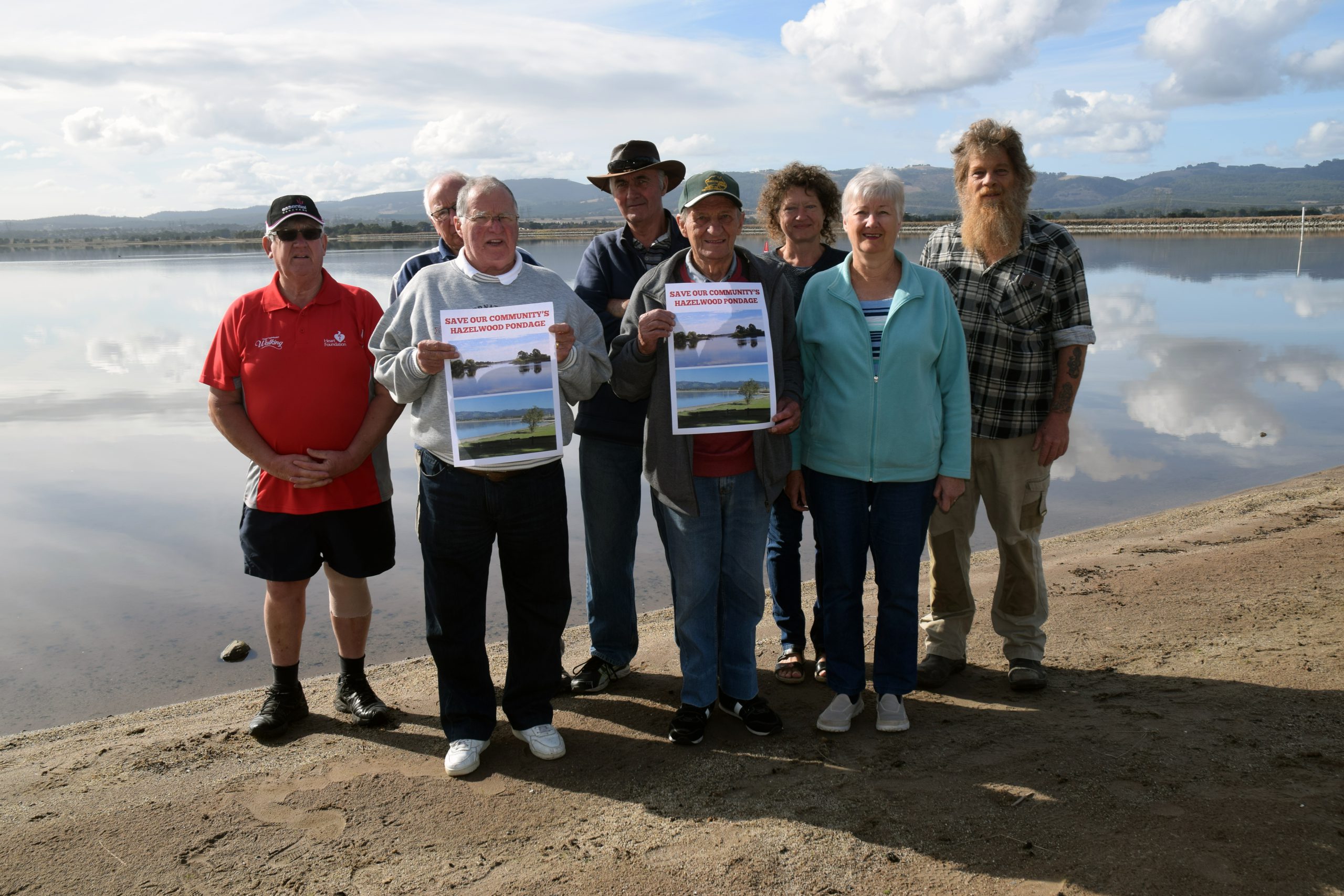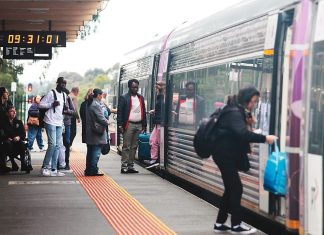COMMENT
JOHN CAMERON
THE Latrobe Valley and Gippsland Transition Plan claims to be a road map to the transition to renewable industries, yet has more potholes than Gippsland roads.
The Transition Plan was developed by the Latrobe Valley Authority, a government authority of only six years standing without demonstrable long-term experience in attracting and bedding down new, large-scale and technologically complex industries.
The then Minister for Regional Development, Harriet Shing said: “This plan reflects the optimism, achievements and ambitions of the region. It recognises Gippsland’s strengths and opportunities and sets a course for long term prosperity and liability”.
This spin sounds great but what is the reality?
Well, according to the Minister, when pressed in Parliament, the reality is far less optimistic “I am under no illusions – none whatsoever – about the difficulty of this task.”
I challenge the Minister to put the regional optimism to the pub test – walk into any Latrobe Valley pub or meet a work crew at lunch and ‘read the room’ – unlikely to be too optimistic.
The Latrobe Valley and Gippsland Transition Plan is a document:
Long on idealistic rhetoric and short on substance;
Long on vague recommendations (the ‘who, when and how’ are generally not specified);
Silent on SMART (Specific, Measurable, Achievable, Realistic/results orientated and Time bound) key performance indicators for the measurement of progress;
Lacks a strategy supported by strategic, financial or economic analysis of potential options;
Devoid of a risk and reward appraisal of options, and;
Does not show that the transition outcomes will deliver superior outcomes to the status quo.
Missing from Plan
FOR a start, the Transition Plan fails to define the new sustainable industries, nor compare the sustainability, economics and job creation of the so called new sustainable industries with our existing industries.
Cottage industries will not cut the mustard.
Under the Transition Plan, we need large-scale new industries that are internationally competitive, to replace the thousands of jobs being lost in mining, power generation, forestry, papermaking and sawmilling.
The Transition Plan fails to acknowledge that the growth of Victoria into a modern society was leveraged off well-planned investments in reliable and affordable energy, paper, timber, and agricultural production. This was accomplished by hard-working Gippsland people over many decades with government support.
The Transition Plan ignores the lessons of history, is selective in its acknowledgement of Gippsland’s strengths, and the so called ‘course for long term prosperity’ lacks a coherent strategy on how to get there. The Transition Plan also fails to acknowledge serious constraints and impediments to implementing the transition.
The Transition Plan does not provide adequate commentary on how to deal with:
Scarce availability of cleared land (most of Gippsland is native forest and cleared land is either too expensive, too far from manufacturers or markets or too steep for plantations for example);
Electricity prices that are no longer internationally competitive for new manufacturing options;
Investor confidence that has been dashed by diminished sovereign risk;
Patient capital may now only be mobilised with taxpayer funded subsidies;
Obtaining the ‘public licence’ to operate the ‘Transition’ Industries will be very challenging. No one wants a windfarm nearby or a new transmission line through their farm, and;
A new group of activists replacing the activists the government caved in to.
The Transition Plan makes 52 recommendations focusing on the transition, including education and training pathways to local employment, but fails to specify where the new ‘local jobs’ will come from.
Doomed to fail
ACCORDING to the spin, the Transition Plan is to build on the Latrobe Valley Authority (LVA’s) work since 2016 to support communities.
Latrobe communities are unlikely to place much faith in the LVA, given the number jobs in Latrobe LGA is down eight per cent over the last decade despite the LVA spending $300 million of taxpayer money on the ‘transition’ over six years.
Jobs are up 11 per cent to 37 per cent in other Victorian regional centres.
The current budget for the LVA’s work on the transition is only $7.2 million, of which $6.5 million is consumed by the 32 staff, effectively leaving the LVA just $700,000 to ‘drive’ the state government’s huge, risky challenging transition.
Funding for Regional Victoria appears to have declined from $8 billion to $5 billion over the past three years and many rural programs have closed including Regional Infrastructure Fund, Stronger Regional Communities, Regional Tourism Infrastructure Fund, Latrobe Valley Economic Facilitation Fund, and Ride High Country Fund.
Ironically, funding for Tiny Towns has been retained, but if the Transition Plan fails there will be more Tiny Towns to support in rural Victoria.
Some of the key unknowns not answered by the Transition Plan are:
What exactly are the new industries that we will transition into?
Where will the new industries be located and how much scarce land will they require, including for associated infrastructure?
Will these new industries be internationally competitive or will they require subsidies?
What are the ‘opportunity costs’ of those subsidies – e.g. what vital health, triple 0 service, affordable public housing and other services will we forgo to fund the subsidies?
How truly sustainable are the new industries on a rigorous ‘cradle to grave’ analysis and are facilities in place for responsible recycling and disposal of spent components?
Are the components manufactured in democratic jurisdictions with renewable energy and not with coal fired power or energy sourced from Russia?
What are the forecast cost imposts on consumers of electricity and timber and will the state government need to continue to subsidise power bills given the 25 per cent hike in retail electricity prices is only a quarter of the movement in electricity prices over the last year?
The plan states that the “Transition to a clean energy economy will lead to increased prospects for agriculture, construction and manufacturing, requiring a skilled workforce”.
The transition has already been underway for a decade and funded by the LVA for about half that time, yet the number of jobs in Latrobe, South Gippsland, Wellington and East Gippsland LGA’s has shrunk, and by up to eight per cent for Latrobe LGA over the last 11 years.
By contrast, other regional and rural areas not subject to a government driven transition of Greater Shepparton, Greater Bendigo, Ballarat, Mildura and Wodonga have experienced job growth of 11 per cent to 37 per cent. Geelong recorded growth of 39 per cent and Melbourne LGA 44 per cent.
Losing high paid jobs
THE Transition Plan is correct in stating that the industries the government are closing down – “Industries such as mining, power generation and forestry are major economic contributors.”
The industries we are transitioning away from provide high paid jobs and considerable production induced jobs in support industries and consumption induced jobs in service industries.
Agriculture/Forestry/Fishing; Manufacturing; Mining; and Electricity/Gas/Water/Waste deliver 36 per cent of Gippsland Regional Output. They deliver above-average regional output per employee and also remuneration per employee (apart from Agriculture/Forestry/Fishing).
The high output per employee and high remuneration per employee translate to above-average production induced and consumption induced employment multipliers and deliver substantially more flow on jobs. These jobs deliver economic benefit to the region that is not possible with industries with lower output and remuneration per employee.
The plan provides no detailed information on the remuneration of jobs in the transition industries, but makes some optimistic comments on tourism.
The Gippsland community is unlikely to want to rely more heavily on a transition to tourism (nor agriculture or fishing) given their low region output and particularly their low regional output per employee and low average remuneration per employee.
The regional output and remuneration per employee for forestry is better than agriculture and fishing, however, the potential for the sector has been amputated by the recent ‘closure’, resulting in a loss of 1 million m3 pa of logs from the native forests, plus the 50,000 hectare decline in the plantation estate over the years since the state government’s Forestry Plan was launched.
To fill the equivalent of a 100,000 ha shortfall in required plantation supply, the state government has promised only a token 14,000 hectares. (The Gippsland Plantation Investment Program costs $240 million – $120 million each from both government and Victorian Hancock Plantations – 16 million trees over 10 years). They will struggle to achieve that without the considerable taxpayer-funded subsidies given the lack of suitable and affordable cleared farmland within economic haul of mills and markets.
The Agriculture/Forestry/Fishing; Manufacturing; Mining and Electricity/Gas/Water/Waste industries rely on ‘scale economies’ to be internationally competitive and are also highly integrated, such that the loss of raw material supply (e.g. cessation of the native forests wood supply) can have a dramatic impact on the viability of downstream manufacturing (e.g. paper and sawn timber production).
The Transition Plan is misleading in stating the existing mining, power and manufacturing industries “are not large employers compared to other sectors.”
This simple statement ignores the substantial production induced multiplier effect (typical of capital intensive industries with large output per employee) and consumption induced multiplier effect (typical of industries with high remuneration per employee).
The Gippsland community deserve to see the comparable estimates of regional output for the transition industries. Currently, utility scale batteries, solar farms, onshore wind farms and offshore windfarms rely heavily on imported components (local content only about five per cent).
After construction, these renewable installations employ only a handful of people in contrast to the thousands currently employed in the power industry. Utility scale solar, onshore wind farms and transmission easements all will compete with plantations and farming for scarce land. For example, a 2000 MW of onshore wind power would need about 48,000 ha.
Shambolic transition
THE plans of the Australian Market Energy Operator (AMEO) for the transition to renewables in Gippsland and Western Victoria have been criticised by experts with considerable experience in transmission of electricity.
The Victorian Energy Policy Centre (VEPC) analysed electricity transmission issues associated with Gippsland renewables, and concluded that the AEMO “has hobbled renewable generation in Gippsland for no good reason”.
The VEPC also criticised the AMEO’s VNI West plan for Western Victoria. The VEPC suggests the AMEO plan will cost $5 billion more and deliver a 1.124 billion per annum or $28 billion more than 25 years increase in electricity bills, and require a 10-fold increase in length of new easement, and host 11 per cent less renewable capacity.
Looks like the state government, in its reckless hast on energy transition, has hitched its renewable wagon up to the wrong horse.
About the author: John Cameron is a Latrobe Valley consultant with a background in forestry and business finance.











